After nearly 3 months of being involuntarily offline due to a software glitch, I am, if not quite in the saddle, nevertheless BACK. My unintended break also coincided with the current pandemic – which has unfortunately necessitated canceling all my upcoming workshops, including the Villa Lugara and Tigh Roy workshops in Italy and Ireland, respectively. The good news: Roy Galvin is prepared to reschedule the Tipperary workshop in August 2021, in the event that things return to normal. Simultaneously, I’ve been dealing with health issues, which launched a period of introspection and realignment. Challenges on every level …
To keep myself motivated over what I believed would be a long haul, I began to think about starting a 100-day art project on social media. I’d wanted to do one for years, but felt unable to commit to any one subject or medium. Then one day, while staring out the window at our garden pond, it suddenly occurred to me the answer had been right in front of me all along. Call it my Dorothy moment: Ah, I get it now! There’s no place like home …
(Admittedly, in hindsight, it seems like a no-brainer: photographing our garden pond every day for 100 days.)
I had no particular artistic goals when I began. My hopes were twofold: first, that the covid crisis would be over by June 29, the 100th day. Second, that I would be able to sustain the discipline (or sheer orneryness, take your pick) to stick to it for that length of time. But to my surprise, artistic goals emerged naturally as time passed. An artist, after all, doesn’t work in a vacuum, but rather needs an echo, a response, from others. I noticed the reactions of my subscribers, fans and friends – and an attendant blossoming of ambition: to entertain, to please, to amuse, to uplift, to console.
At first, I simply shot basic, contextual images, following the season’s progress. The initial weeks’ photos were characterized by a thin sheath of ice. Then things began to grow. The green shafts of cattails, irises, and rust-colored waterlily pads emerged. A fine yellow pollen dusted the water’s surface. Gusts of wind and rain scattered seed pods, which drifted to the edges. Orange-bellied newts hovered in green amber depths. Frogspawn appeared and dissolved, flushing hordes of tadpoles into that small, silent universe. Change became the constant theme. My perspectives changed.
As the weeks progressed, I realized my images were being influenced by my social media audience. Would this or that frame appeal? Should I vary the frames from day to day or keep the same perspective to show the subtle changes I observed? How could I highlight what I felt to be salient on a given day? More and more I sought frames that had aesthetic qualities on a purely abstract, compositional level. Light and dark, tonal values and shapes, color versus black and white. Shadows, reflections, movement. Juxtapositions – the rhythm and order of images – became increasingly important. Gradually, I came to perceive these daily posts as material for future works in other media.
Now, two-thirds of the way into the process, I’ve begun playing with filters – simple apps available on my iPhone and Instagram. Nothing fancy. My explorations are moving away from the concrete and recognizable – pond, stone, lily pad – toward the abstract. The pond per se has retreated into the background and I am now focused on the artistic aspects this ordinary garden pond invites me to explore. I probably would not have arrived at this purely artistic level if I hadn’t begun to get a little bored. Nor would I have gone this deep if I had only committed to, say, 10 days. Or 21. Or 30. It is precisely because I chose the long haul, 100 days, that I now find myself gifted with insights. These strange doldrums teach me mindfulness in a way I’ve never experienced before.
Thus the garden pond has become a source of inner calm in these unnerving times. A mirror of my soul, it is a consolation, offering proof that I am part of the world, of nature – and alive. It has become my omphalos, my bliss.
GRATITUDE
The holiday season, with its good cheer and festivities, is already upon us. And I’m feeling enormously grateful for everything that has come to pass – and for the good fortune that has allowed me to carry out my plans (see previous blog, “Create, Revise, Destroy, Create”).
For a start, my new catalogue is out! “microcosm | mikrokosmos. Pond stories | Teichgeschichten” is a high-quality, 96-page, four-color digitally printed book, designed by Maren Witthoeft, featuring my pastels and pulp paintings, photographed by Jim Martin. I couldn’t be more pleased. If you’d like to order a copy, just write me an e-mail at gabi.glang@gmail.com (35 € + postage).
Next, please visit the Events rubric on this website: I’ve posted details on the creative art retreats I mentioned in my previous blog, Lugara and Tipperary. As of this writing, there are still spaces available in both courses.
Finally, and most immediately: I’m opening my studio on December 7th and 8th to celebrate the new catalogue. A large nunber of the paintings exhibited are those depicted in the catalogue. I’m looking forward to welcoming you to the Atelier | Galerie Gabriele Glang this weekend!
An old adage has it that if you want to do something new, then you must make room for it – by getting rid of the old. The rub therein: choosing what to keep, what to throw out. Which projects and ideas do I abandon? Which do I keep? The process involved weeks of cleaning up, throwing out, reorganizing both my studios (at home in the attic and in Gosbach), repurposing, refinishing, reframing. And yes, destroying. A dirty (and sometimes painful) job, but somebody’s gotta do it, so guess who … It took the better part of spring and summer, and I’m still not done – but I HAVE made progress.
After a busy and wonderfully productive summer (which included a wood lithography workshop taught by Ewa Budka at the Art Print Residence in Arenys de Mar, along with my third workshop on papermaking and pulp painting at the John Gerard Paperworks studio in Hilberath), I found myself taking stock. Perhaps it’s force of habit, all those years beginning the new school year in early September, but it seems entirely natural to think about where I’m going and where I want to be.
NEW CATALOGUE
It turns out the new work produced over the last two months picks up on an old subject, a theme I’ve worked on for decades: the microcosm of the pond. And so, without further ado, I’ve embarked on the production of a new (bilingual) catalogue: MICROCOSM. POND STORIES | MIKROKOSMOS. TEICHGESCHICHTEN.
I’m now in the midst of getting bids for the printing. The photos (roughly 80 images) have been made (thanks once again to Jim Martin, my trusty Stuttgart-based photographer par excellence!), and graphic artist Maren Witthoeft has come up with a gorgeous layout. Artist/gallerist and long-time supporter Dorothea Schrade has agreed to write an essay for the book. I’m aiming for a publication date of early December. A launching party in the Gosbach studio, with a concurrent exhibition featuring the works that are reproduced in the catalogue, will be scheduled then.
As with my previous projects, I hope I may once again count on you, dear readers – friends, fans, and collectors – to support this endeavor! I’ll be reaching out to you shortly to ask if you’d like to participate. Watch this space, ditto my Facebook and Instagram accounts. Or write me: gabi.glang@gmail.com.
NEW LOCATIONS
I’ve finally found a couple of new locations for my creative workshops abroad – one in the Apennines near Modena, Italy, and one in County Tipperary, Ireland, in June and August 2020 respectively. I’ll be confirming dates via e-mail later this fall. If you’d like to be on the mailing list, please e-mail me: gabi.glang@gmail.com.
According to the Sami people’s calendar, early spring is the season of awakening. Hereabouts, in southern Germany, I’ve noticed I no longer wake in total darkness. Each day offers a veritable bouquet of weathers: now a misty rain, now squally winds, a shower of sleet, or even a quick flurry of snow that leaves a white dust on the soggy fields for a few moments. In between: a sudden shaft of sunlight illuminates the raindrops clinging to hard buds on still bare branches. It’s the season of rainbows. And I can’t help the quiet surge of joy when I encounter one – a vast, shimmering arc linking the Swabian Alb with brooding skies – an ephemeral promise of things to come.
The Samí people consider February – Dálvvie is deep winter – the season of caring. Nature is resting under all that snow; the world slows down, regenerating. The reindeer move slowly, with care and deliberation. Foraging for food beneath the thick layers of snow is hard work – and a matter of survival.
It is Candlemas, a Christian feast marking the end of Epiphanytide and pointing toward the waxing light of spring. At the moment, however, the landscape looks anything but springlike. For weeks the snow layer has grown and shrunk in turn, now piled with heavy snows, then melting in a brief thaw, followed by fresh layers of powder. Today the sky looms surly gray. A stinging drizzle leaves a treacherous sheen on the snow’s melting skin. I have trouble imagining even a single snowdrop … And my favorite place is napping on the sofa. Call it my way of hibernating.
Despite the drearily gray days, I notice how the days do in fact grow longer. For me, February means a break from my day jobs as translator and university docent. It’s the time for doing things slowly, carefully, deliberately. It’s the time for reexamining goals, for digging deeper into the question of where I want my art and writing practice to go in the future. My younger son, an educational scientist, calls this metacognition. I call it reflecting on what worked and what didn’t, reevaluating and setting new goals.
Fortunately, I can do that on my sofa, too. In between cross-country skiing and stone lithography classes.
In the Sámi calender, Giessie, the summer lasts only about a month – and is an invitation to slow down. In most western cultures, we don’t necessarily associate true summer with contemplation. My childhood memories revolve around swimming in the neighborhood public pool, practicing my diving, and working on my tan. It was vacation time: time for the two-week family holiday at the beach, for hanging out in the yard, for barbecues, for reading under a tree until dark.
This past summer, my father passed away. The weeks immediately following were far too busy to slow down, no room in my schedule or in my heart for contemplation. Fortunately, we were blessed with a long Indian Summer, so I was able to satisfy my need for contemplation.
Now finally my spirit seems to be in sync with the Sámi people’s calendar again. Tjaktje – the season of desire – is the season of the raindeer rut. The days narrow in ever-expanding darkness, leaving only a sliver of daylight above the horizon. In the USA, we celebrate the end of this season with arguably the most important of family feasts: Thanksgiving. This year will be the first without my father. Gratitude is difficult during mourning – at times, grief can be overwhelming. But I take it one step at a time. I’m thankful for the release his death undoubtedly was. I’m thankful for the harvest, real and metaphorical. I gather, sift, and store the memories, what I know of my father’s life.
Meanwhile, the apples silently perfume the cellar with their scent. I plant flower bulbs for the coming spring. I gather mushrooms, sloe plums, walnuts, rosehips. And beneath the cold ground under my feet, I can still feel my desire – what I want to do, make, create – in the face of time’s relentless passage. I can feel my will to carry on. And I will carry on.
The Samí’s early summer, Gijrragiessie, begins around the summer solstice and lasts only a few weeks, not even a month. Then, true summer – Giessie – begins, lasting until the end of August. But the truth is, hereabouts, on the Swabian Alb, summer’s already well underway. The garden roses are flourishing: a rambler planted only a few years ago, heavy with magenta blossoms, has finally reached the other side of the arcing trellis installed for that purpose. The wheat fields shimmer silvery dun, as though sheathed in moonlight. The barley fields tend toward pinkish-beige. If I were to paint them today, I would reach for flesh tones. I recently discovered a sprawling stand of rare Turk’s cap lilies in the beechwoods nearby: jewels the color of faded rose madder, freckled with dusky pink, each blossom no bigger than a plum.
Although so much delights the eye, this solstice makes me deeply melancholy. Something in me can’t quite grasp the year’s turning, the certainty that the days will grow shorter from now on, that this most joyful of seasons already contains the seeds of its own death. While I fully know this is a necessary cycle, I mourn in anticipation of the immutable decline, the ephemeral nature of summer’s beauties.
The word for what I am experiencing is anticipatory grief, the feeling of mourning an impending loss.
As always, my feelings are way ahead of me. But I trust in mother nature to lead the way, to show me where I must go to find the healing I crave, to cradle my soul.
Those who do not exist can make no demands.
– Nils-Aslak Valkeapää (alias Áilluhaš)
Gijrra, the Sámi people’s word for the current season, is translated as “true spring.” Up north, reindeer calves are born in May, taking their first faltering steps; the lengthening days melt the ice, swelling streams and rivers; and vast flocks of migratory birds arrive. I have no idea if spring comes slow or fast in Sámi country, but here on the Swabian Alb, this year spring sure is in a hurry. The larks came late, but thanks to April’s warm temperatures, everything seems to be blossoming simultaneously. For a painter, it’s a challenge to capture the glories of orchards abloom, while at the same time lilacs burst into flower alongside tardy sloe plums and those vanilla-and-strawberry-ice-cream-colored tulips I brought from Amsterdam last November. I’m so distracted while driving that sometimes I need to stop, park the car, and get out my mobile phone to photograph what enchants me. It’s the quickest form of note-taking I know of – and every time I load the photos on my computer, I’m seized by impatience to throw myself into a new body of work.
Here on the Swabian Alb, we have another weather phenomenon which one would do well not to ignore: the Ice Saints, a cold spell of several days roughly during the second week of May. The temperatures can spell disaster for impatient gardeners who put their potted plants outside beforehand.
In early summer – which the Sámis call “spring-summer” – their craftspeople are at their busiest, turning reindeer hides into dyed skins using willow and birch bark, which can be harvested easily during this time. In the Arctic, there is a similar cold spell during which snow may fall, flowers freeze, or the cloudberry crop be decimated.
I too feel the surge of productivity, but am aware of the need to pace myself, to let things grow and develop at their own intrinsic pace. Like any new skill, progress depends on failure, involving missteps, faltering. Everything is unfamiliar, and I must gather courage for what lies ahead, mustering a vision for the future.
Behold, my friends,
the spring is come;
the earth has gladly received
the sun’s embraces
and we shall soon see
the fruits of their love!
(– Sitting Bull, “Bjiejjie”)
Although the same can’t be said for spring, my new studio in Gosbach is now ready to welcome me and whatever guests care to visit. It still feels very unfamiliar. And cold: the radiators respond only slowly. I spend ages hunting for a pocket rule, a pencil, a roll of masking tape. And where did I store that delicious stack of handmade paper I ordered from Gerard Paperworks in January? I have not yet truly taken possession of my new quarters. I visualize the paintings I’ll make. But I have not yet had the space of an undisturbed day in which to let something new unfold, take shape.
Since my last blog entry, it is still not spring yet. Chaos reigns. Take today: It snows. It rains. The sun comes out. A fool wind haunts the bare limbs of trees. And in the wink of an eye, a curtain of hail obscures the far fields, lying morosely rain-sodden, expectant, beneath the changeable sky. Or maybe it is I who am morose, rain-sodden, expectant. I find myself in a process of reinvention, shedding an identity that no longer jives with my needs. New tasks, new chores, new jobs necessitate reorganization, reorientation. I don’t quite know who I am yet, who I am going to be, what identity will be revealed when I shed the old skin entirely. Besides, I don’t know what to wear.
Change is relentless, abiding, stressful.
The other day, I stole an hour for a walk along the Swabian Alb escarpment near my home, with no other thought than to clear my head and pay my respects to March’s annual highlight: leucojum vernum. Although I slipped on wet stones and landed hard on my rear end in the mud, my tenacity was rewarded. The spring snowflakes surged down the hillsides in profusion, at their peak, their enchanting little bells glowing in pristine plumpness, dripping with rain. The village church chimed in, counting the eleventh hour. A gentle reminder of quotidian demands, and of how I have unlearned to wait. The day blooms, the season unfolds.
In that very moment, all I had to do was listen and look, drinking in March’s cup of purest joy.
Winter still prevails. A fleeting snow dusts the fields, muting color. Yet tiny green spears pierce the crusty ground. The first snowdrop in the garden portends Gijrradálvvie, what the Sami people of Europe’s far north call the season of awakening. Americans in the Northeast refer to it as mud season. An intense, if short, and particularly messy period of transition, metamorphosing into spring.
This perfectly describes my life over the past few months. Abruptly, unexpectedly, my landlord terminated the lease on my beautiful mill studio in Wiesensteig on the Fils, after just four years. A month later I’d found a new studio, only 3 kilometers downstream, in a pretty village called Gosbach. Over the last weeks I’ve been intensely busy renovating the new place and preparing the move. The new studio is half the size of the old one, so I’m confronted with the painful necessity of downsizing. A messy business, as it means culling, killing a few darlings.
At the same time, something new wants to grow. Thus, half of me is in destruction mode; the other half, in reinvention mode. Half of me is grieving, the other half busily envisioning what’s to come. Packing up hundreds of framed works, throwing away what literally and metaphorically no longer “fits,” cleaning up every last trace of my presence versus the physical labor involved in renovating, repainting, reinstalling, and reimagining the new studio.
By March 1, I hope the metamorphosis will be complete. I look forward to welcoming you into my new Atelier + Galerie Glang, Unterdorfstraße 19, 73342 Bad Ditzenbach-Gosbach.
Website Manager: Leo Ebert-Glang
Programmer: Benjamin Rindt
I am delighted to announce a long-held plan come true: the new edition of my website! New look, new contents, user-friendly (self-) maintenance – all this will motivate me, I hope, to regularly update. In any case, I have the best intentions.
A grateful thank you to Leo Ebert-Glang and Benjamin Rindt, who took on the design and programming. I hope these two will continue to support me for a while, until I’m able to maintain the website by myself.
Some years ago, I stumbled upon the Sami people’s division of the year into eight seasons. The vast majority of this indigenous population in northern Scandinavia earn their living raising raindeer. To me, the names of the seasons sound very poetic, clearly reflecting their deep connection with nature. Raindeer are only half-domesticated, following the migratory trails of their wild ancestors across impassable territory of forests and mountains. Early winter, for example, is called the season of migration, Tjakttjadálvvie. It is the season in which the raindeer begin their migrations in search of new feeding grounds. Dálvvie, deep winter, describes the period in which nature is dormant beneath a deep, protective snow cover. Late winter, Gijrradálvvie, between late February and late April, is the season of awakening.
Thus I imagine the upcoming winter months as a time of nurture. Nature shuts down, slumbering, renewing itself – to finally reawaken in spring, bursting with vitality and brimful of sap. Inspired by the eight Sami seasons, I plan to publish this blog eight times a year. What to expect? Stay tuned!
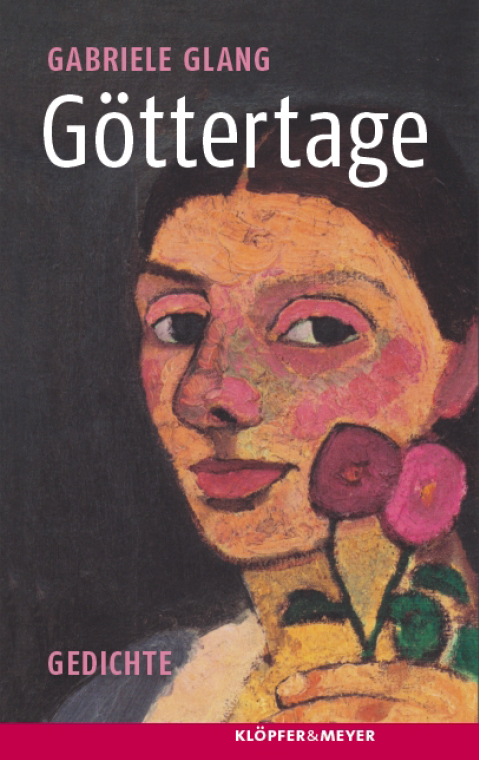
2017 Klöpfer & Meyer Verlag, Tübingen (Lyrik)
Offset print, hardcover, 96 pp. 18 €
ISBN 978-3-86351-459-4
(To order | Bestellungen: kloepfer-meyer.de)
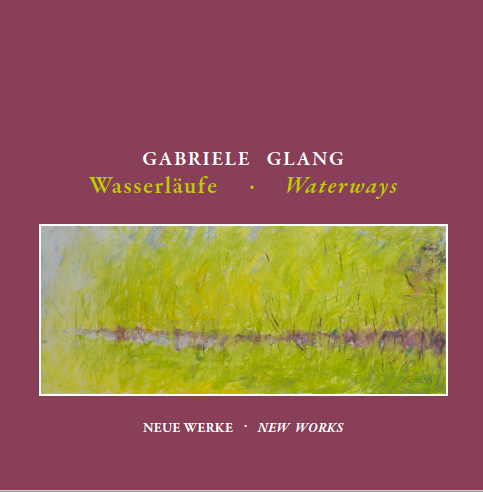
2017 Palimpsisters Press (bilingual art catalogue), Geislingen/Steige
Digital print, softcover, 15 €
(To order | Bestellungen: gabi.glang@gmail.com)
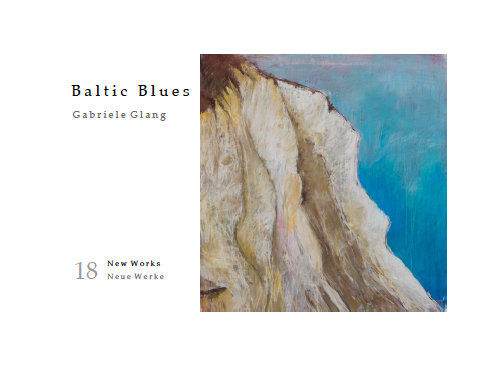
2015 Palimpsisters Press (bilingual art catalogue and poems), Geislingen/Steige
Digital print, hardcover, 25 €
(To order | Bestellungen: gabi.glang@gmail.com)
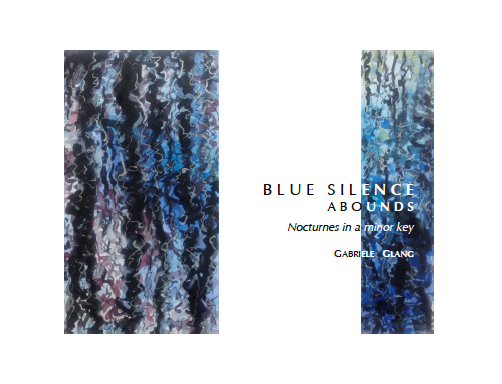
2015 Palimpsisters Press (English poems), Geislingen/Steige
Digital print, hardcover, 20 €
(To order | Bestellungen: gabi.glang@gmail.com)
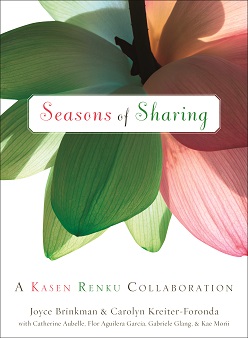
2014 Joyce Brinkman, Carolyn Kreiter-Foronda, Flor Aguilera, Catherine Aubelle, Gabriele Glang, Leapfrog Press, Fredonia, NY
Softcover, 12 €
(To order | Bestellungen: gabi.glang@gmail.com)

2013 Trilingual art catalogue with Catherine Aubelle (paintings and poems)
self-published, Geislingen/Steige
Offset print, hardcover, 40 €
(To order | Bestellungen: gabi.glang@gmail.com)
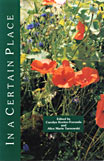
2000 SCOP Publications, Maryland (anthology, edited by Carolyn Kreiter-Foronda, Alice Marie Tarnowski) (To order: http://www.storie.it/english/issues/2/)
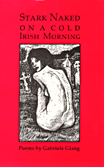
1990 SCOP Publications, Maryland (English poetry)
(out of print)

1989 SCOP Publications, Maryland (anthology, edited by Gabriele Glang
(out of print)
Complete list of all published works in anthologies and other print media: Download